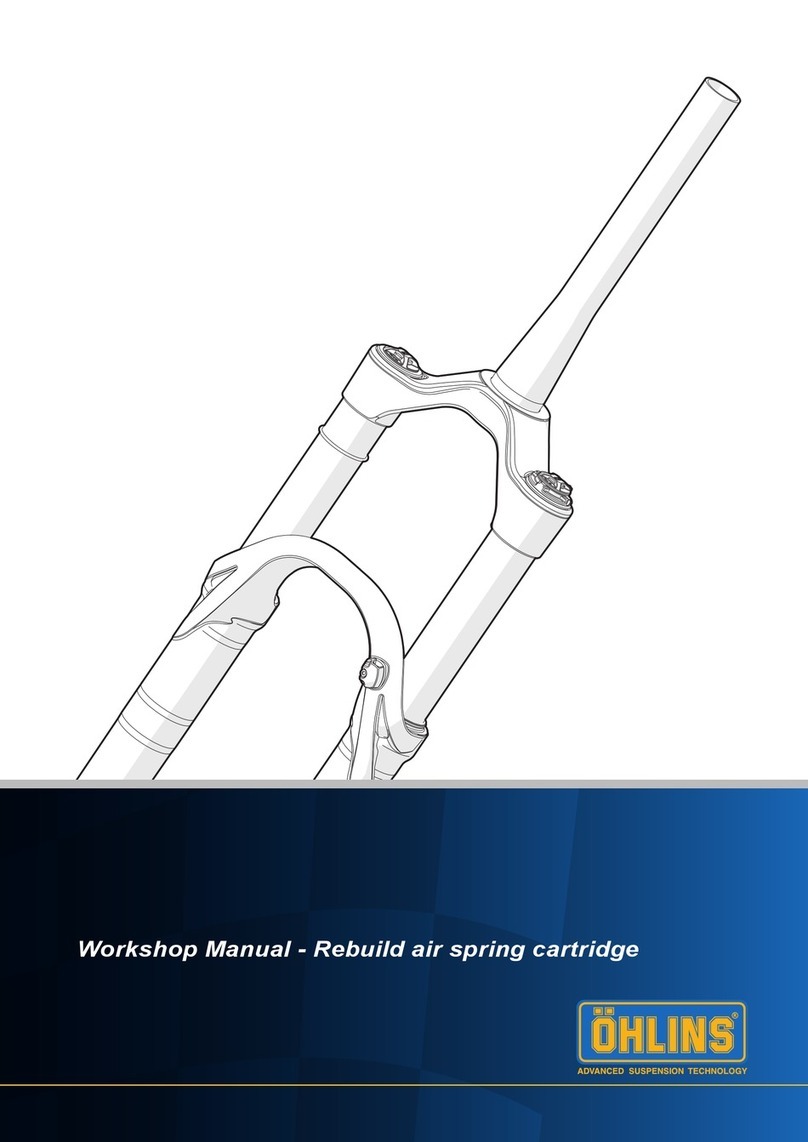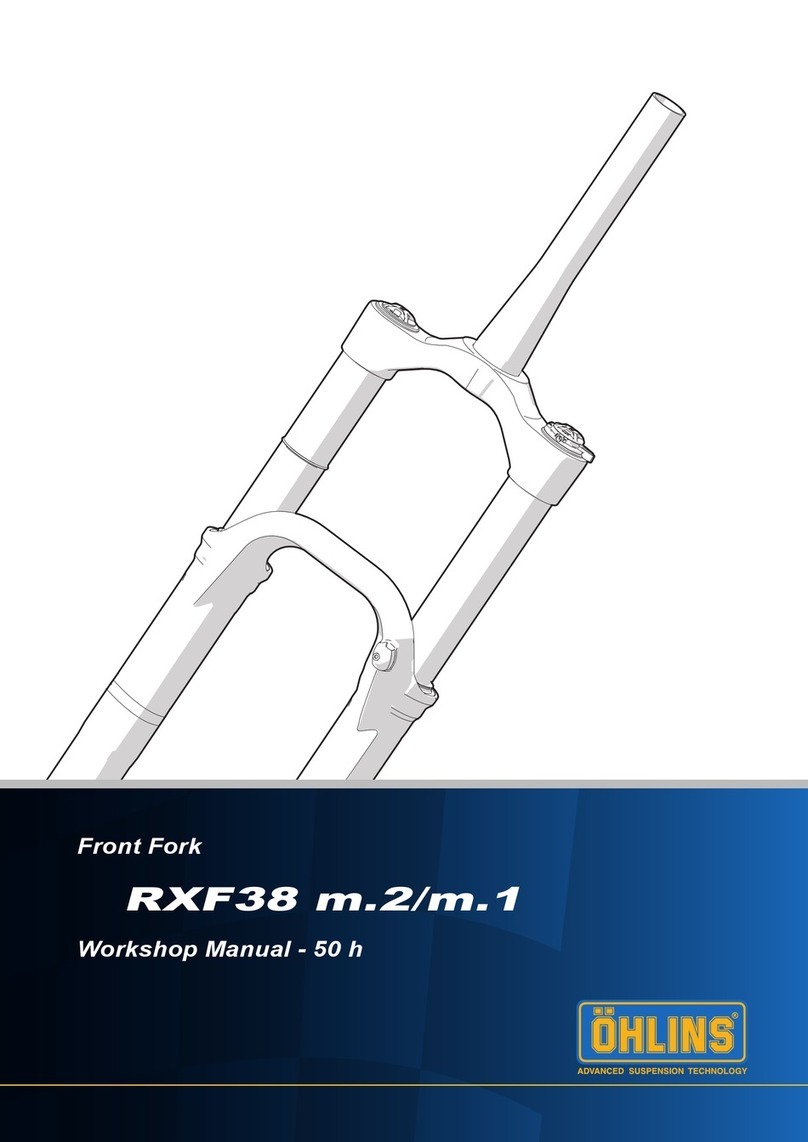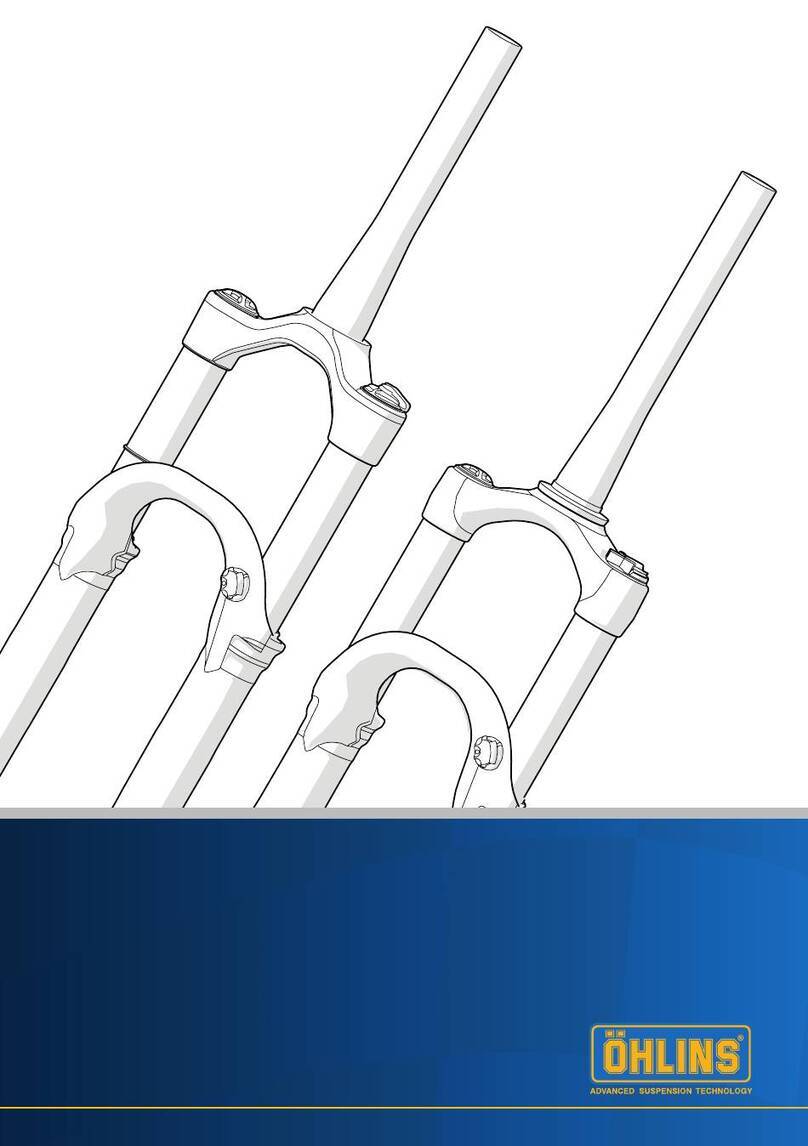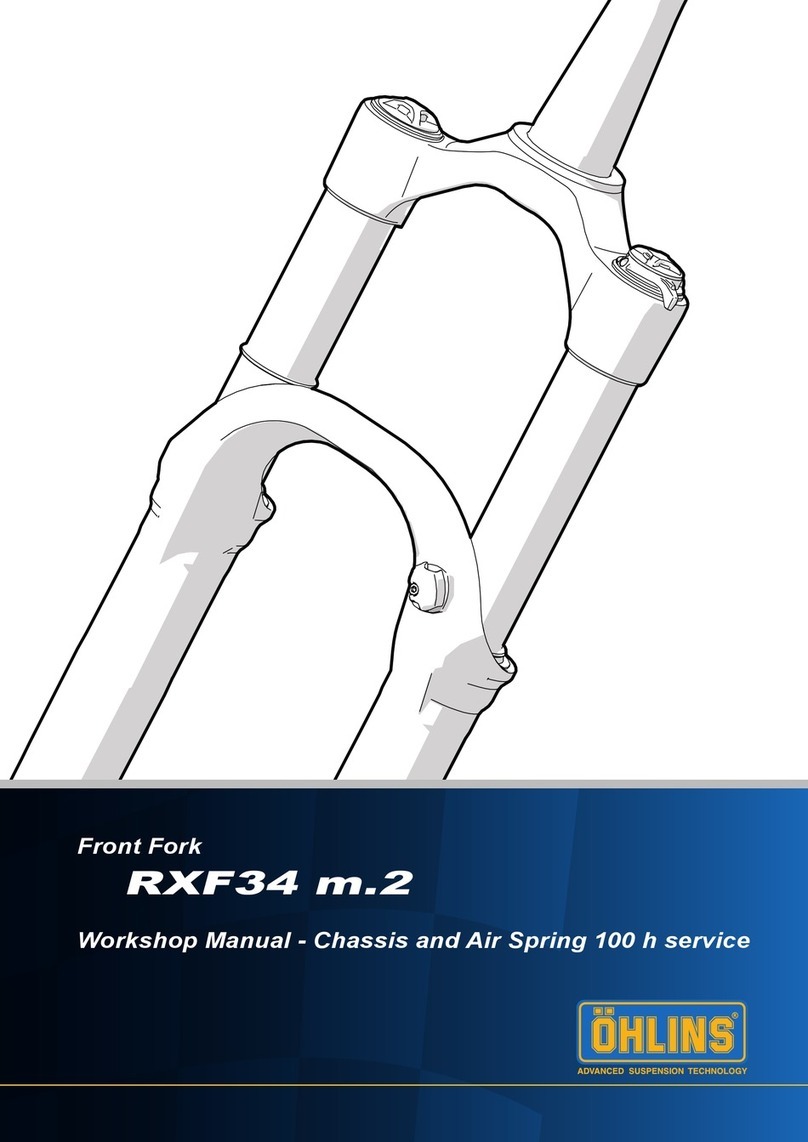
2/12
SAFETY SYMBOLS
In this manual and other technical documents,
important information concerning safety is
distinguished by the following symbols:
The Safety Alert Symbol means: Warning! Your safety
is involved.
Warning!⚠
The Warning Symbol means: Failure to follow
warning instructions can result in severe or fatal
injury to anyone working with, inspecting or using the
shock absorber, or to bystanders.
Caution!✋
The Caution Symbol means: Special precautions
must be taken to avoid damage to the shock
absorber.
Note!1
The Note Symbol indicates information that is
important regarding procedures.
than one operator or rider, such as a tandem bicycle
or heavy utility bicycle. Any use outside of these terms
must be approved by Öhlins on a case-by-case basis.
Any such unauthorized misuse may result in failure of
the suspension, which could cause a crash and result in
property damage, SERIOUS INJURY OR DEATH, and a
voided warranty.
Warning!⚠
This product was developed and designed exclusively
for a specic bicycle model and shall only be installed
on the intended bicycle model in its original condition as
delivered from the bicycle manufacturer.
Warning!⚠
This product contains pressurized air. Do not open, service
or modify this product without proper education and proper
tools. All hydraulic servicing must be completed by an
authorized Öhlins MTB service center. All other servicing
must be completed by an authorized Öhlins MTB service
center. Alternatively you can conduct the service yourself
if you have the necessary skills, genuine parts and tools.
In some cases the shock absorber may need to be sent to
another region for service.
Note!1
The shock absorber is an important part of the bicycle
and will affect the stability.
Note!1
Read and ensure you understand the information in this
manual and other technical documents provided by the
bicycle manufacturer before using the product.
Note!1
Öhlins Racing AB can not be held responsible for any
damage to the shock absorber, bicycle, other property
or injury to persons, if the instructions for mounting,
usage and maintenance are not followed exactly.
Warning!⚠
After you have installed the Öhlins product, take a
test ride at low speed to ensure that the bicycle has
maintained stability.
Warning!⚠
If the suspension makes an abnormal noise, or the
function is irregular, or if you notice any leakage from
the product, stop riding the bicycle immediately and
return the product to point of purchase or an authorized
Öhlins MTB service center.
Warning!⚠
The product warranty shall only apply if the product
has been operated and maintained in accordance
with recommendations in this manual. If you have any
questions regarding usage, service, inspection and/or
maintenance please contact an authorized Öhlins MTB
service center.
Note!1
When working with the Öhlins product, always read the
bicycle manufacturer’s manuals.
Note!1
This manual shall be considered as a part of the product
and shall therefore accompany the product throughout
its life cycle.
Warning!⚠
This product was developed and designed for the
bike industry and shall only be installed onto related
vehicles, including pedal-assisted motorized cycles that
produce a maximum of 250 watts of power. DO NOT
use Öhlins bicycle suspension products on any throttle-
equipped motorized cycles or vehicles carrying more
SAFETY PRECAUTIONS
© Öhlins Racing AB. All rights reserved.
Any reprinting or unauthorized use without the written permission of Öhlins Racing AB is prohibited.



































